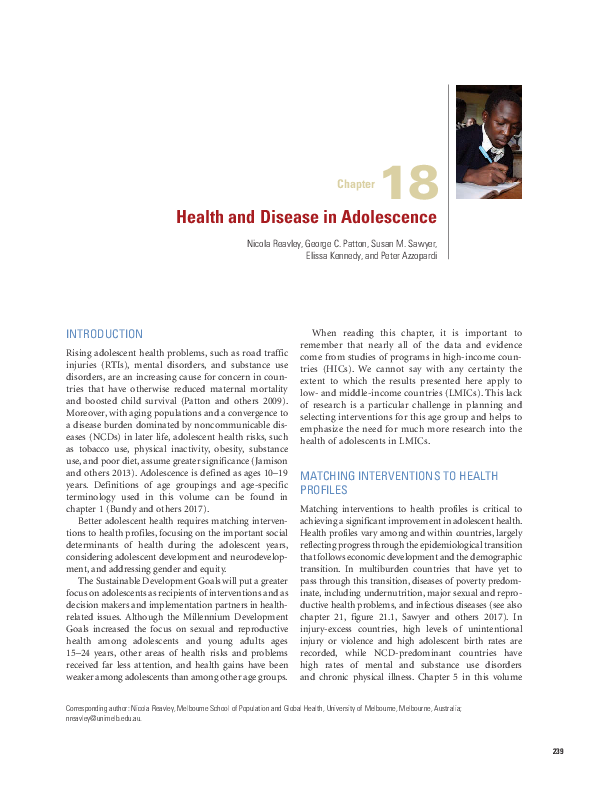
DCP Chapter 18: Health and Disease in Adolescence
Publication year:
2017
English
Format:
pdf (157.2 KiB)
Publisher:
The World Bank Group
Because the social and environmental determinants of health among adolescents and young adults vary widely, intersectoral and multicomponent interventions offer the best opportunity to improve adolescent health, such as school- and health-service-based interventions to prevent early marriage and pregnancy, which prove more likely to succeed if accompanied by interventions generating community support, such as public hearings, meetings, and fairs. With the exception of sexual and reproductive health, available evidence mostly comes from high-income countries (HICs), particularly the United States, leaving implementation in other countries, especially low- and middle-income countries (LMICs), uncertain. As effective interventions will only have benefits if widely implemented, local contexts, including culture, beliefs, knowledge, lifestyles, and health systems, must receive consideration. Effective implementation and scale up require a systematic approach to addressing these factors and to achieving a balance between desired outcomes and implementation constraints. It also requires involving all stakeholders and engaging existing system capacities, wherever possible. Ongoing monitoring and evaluation of interventions in different contexts remain critical to building the evidence base.
>> Press here to return to the Disease Control Priorities (3rd Edition) Start Page
Read full abstract
Authors
View & Download
English
1 Documents
Document information
Publisher
Format
Rights
© Author/Publisher
Found a mistake? Help us improve!
If you have noticed a document assigned to the wrong author or any other inaccuracies, let us know! Your feedback helps us keep our data accurate and useful for everyone.
Share
Link
